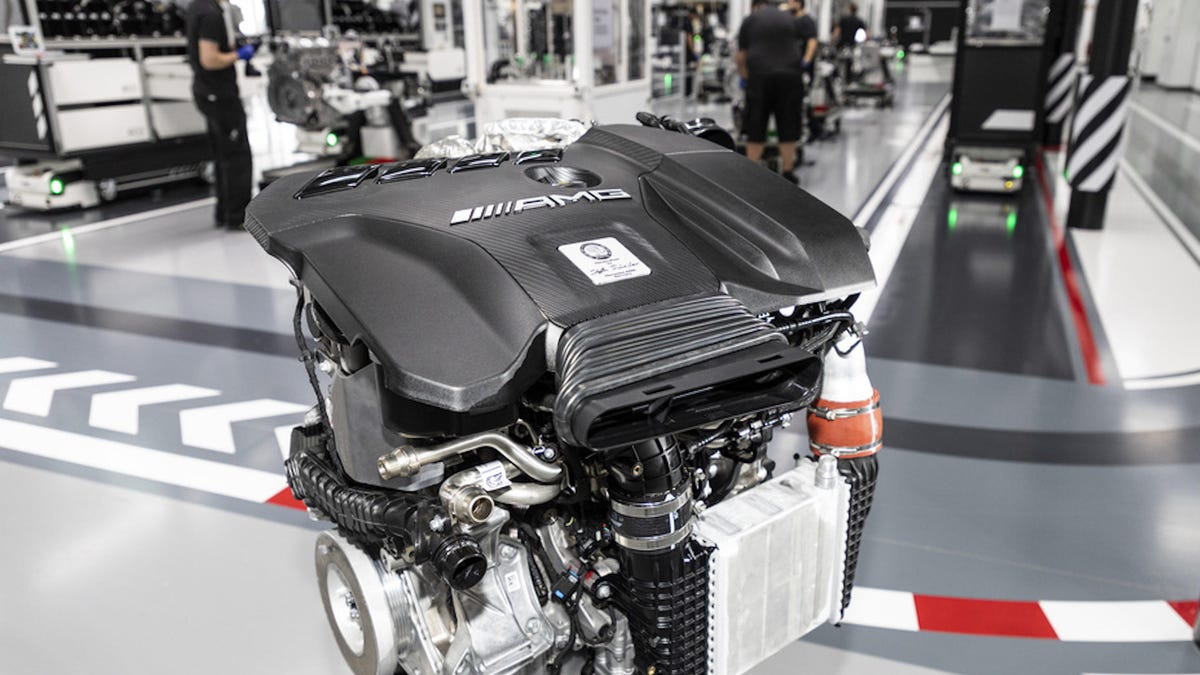Mercedes-AMG just broke our brains with the M139, a 416-hp 4-cylinder engine
AMG is effectively telling the laws of physics to hold its beer while it turns the wick up to insane levels on a production engine.
There used to be a time, not that long ago, when four-cylinder engines with turbochargers rarely made more than 250 horsepower. But those days are gone now, and just in case you need convincing, here's Mercedes-AMG's latest four-banger: the M139, which it announced on Thursday.
The S-version M139 is now officially the world's most powerful production four-cylinder engine, thanks to its mind-scrambling 416 hp. Nope, that's not a typo; this 2.0-liter four-cylinder engine makes more horsepower than the BMW E9x M3's 4.4-liter V8 engine did. It also makes way, way more torque -- some 369 foot-pounds of it, to be exact. There's a non-S version, too, which makes 382 hp, but who cares?
"With the M139, we have once again impressively demonstrated the engine expertise of Mercedes-AMG," said Tobias Moers, chairman of Mercedes-AMG, in a statement. "Not only is the output per liter unrivaled for a turbocharged engine, the high level of efficiency also demonstrates that the internal combustion engine still has further potential."
The M139 engine is different from its predecessor, the M133, in several ways. The most significant change is that the engine has effectively been flipped around so that the exhaust side of the cylinder head points toward the vehicle's firewall. This simplifies routing for the turbo system's plumbing and allows AMG's engineers to bring the nose of the car down for better aerodynamics.
AMG's engineers didn't stop there. They gave the M139 a highly efficient (and expensive) dual ball-bearing, twin-scroll turbo. This has the effect of increasing turbo responsiveness and eliminating the laggy feel that you'd typically expect in such a heavily turbocharged engine.
Another concern that's created by all that turbo pressure -- nearly 30.5 pounds per square inch, to be exact -- is whether the engine's internals will be able to stand up to its abuse for a long time. To assuage that, Mercedes opted to use a closed-deck engine block for cylinder stability, as well as a forged crankshaft and pistons, both of which are also lighter than their cheaper, cast counterparts.
AMG uses a number of other tricks to help increase longevity and engine output, including an electric water pump that reduces parasitic drain and can be more accurately controlled to manage engine temperatures. It also opted to use air-to-water intercooling, rather than the more-traditional and cheaper air-to-air style. This has the benefit of better packaging and more stability for engine thermals under load.
Clearly, the M139 doesn't need to make over 400 horsepower, but because AMG seemingly only employs crazy people that don't live in the same world that you or I do, it does so anyway. We're not positive yet what Mercedes will put this engine in -- we'd guess things with a "45" badge followed by a little "s" -- but it will undoubtedly be a riot in any application.


